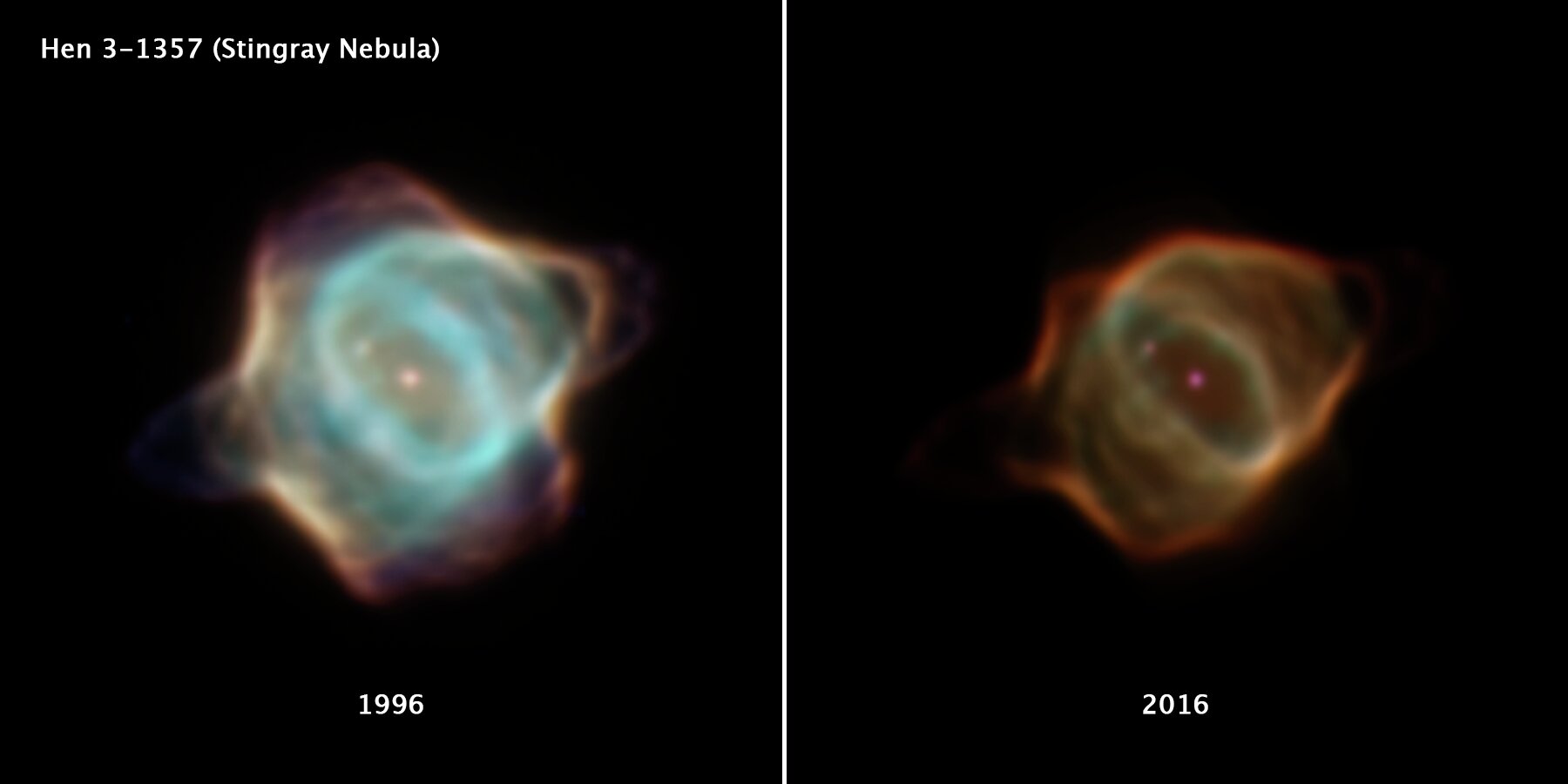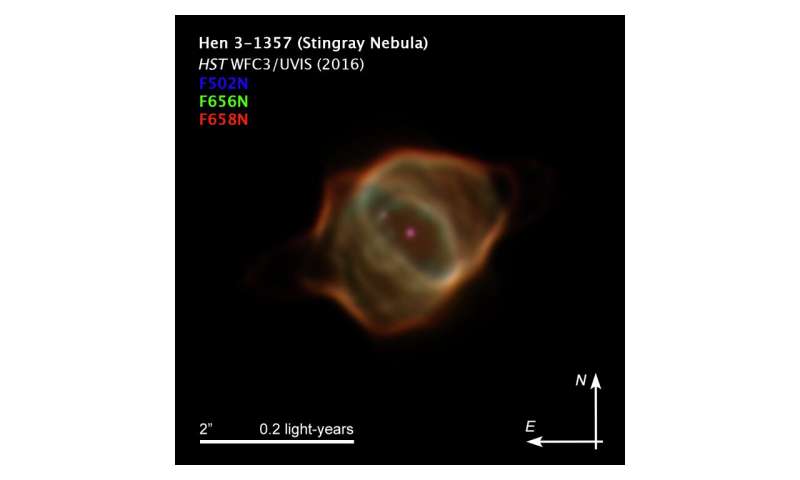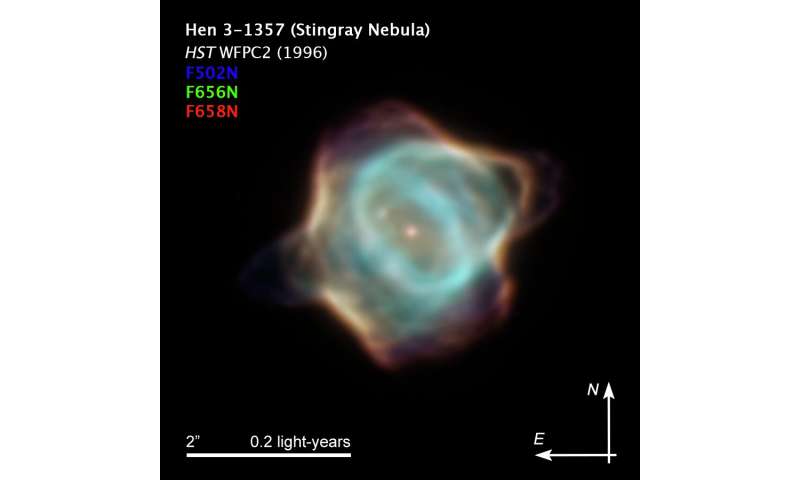
[ad_1]

This image compares two radically different portraits of the Stingray Nebula captured by NASA’s Hubble Space Telescope 20 years apart. The image on the left, taken with the Wide Field and Planetary Camera 2 in March 1996, shows the central star of the nebula in the later stages of its life. The gas blown by the dying star is much brighter than the image of the nebula on the right, captured in January 2016 using the wide-field camera 3. The Stingray nebula is located in the direction of the southern constellation Ara (the Altar). Credit: NASA, ESA, B. Balick (University of Washington), M. Guerrero (Instituto de Astrofísica de Andalucía) and G. Ramos-Larios (Universidad de Guadalajara)
Good things take time. This is true when it comes to many processes in the universe. For example, it takes millions of years for stars – the building blocks of the universe – to form. Then many stars last for billions of years before dying and starting to eject shells of gas that glow against the vastness of space – what we call nebulae. It can be extremely rare to capture some of these processes in real time.
Lucky for us, it looks like the Stingray Nebula, Hen 3-1357, was destined to stand out from the crowd since its debut. It was dubbed the youngest known planetary nebula in 1998 after Hubble got a rare glimpse of the later stages of the central star’s life. Today, twenty years after its first snapshot, the Stingray Nebula is capturing the attention of astronomers for a very different reason.
Images from 2016 show a nebula that has radically faded over the past two decades. In addition, the gas shells that surrounded the central star have changed, they are not as crisp as they once were. Changes like this have never been captured with this clarity before.
Astronomers caught a rare glance at a rapidly fading shroud of gas around an aging star. Archival data from NASA’s Hubble Space Telescope reveals that the Hen 3-1357 nebula, nicknamed the Stingray Nebula, has been precipitously erased over the past two decades. To witness such a rapid rate of change in a planetary nebula is extremely rare, say the researchers.
Images captured by Hubble in 2016, compared to Hubble images taken in 1996, show a nebula whose luminosity has dramatically decreased and changed shape. The bright blue fluorescent tendrils and gas filaments towards the nebula’s center are all but gone, and the wavy edges that earned this nebula its aquatic-themed name are all but gone. The young nebula no longer appears against the black velvet background of the vast universe.
“It’s very, very dramatic and very strange,” said Martín A. Guerrero, team member at the Instituto de Astrofísica de Andalucía in Granada, Spain. “What we are seeing is the evolution of a nebula in real time. Within a few years we see variations in the nebula. We have never seen this before with the clarity we get with this view. . “
Researchers have discovered unprecedented changes in the light emitted by glowing nitrogen, hydrogen and oxygen projected by the dying star at the center of the nebula. Oxygen emission, in particular, dropped in brightness by a factor of almost 1,000 between 1996 and 2016.

NASA, ESA, B. Balick (University of Washington), M. Guerrero (Instituto de Astrofísica de Andalucía) and G. Ramos-Larios (University of Guadalajara)
“Changes in the nebulae have been observed before, but what we have here are changes in the fundamental structure of the nebula,” said Bruce Balick of the University of Washington in Seattle, responsible for the new research. “In most studies, the nebula usually gets bigger. Here it fundamentally changes shape and weakens on an unprecedented time scale. Also, to our surprise, it does not widen. the elliptical ring seems to shrink as it fades. “
Ground observations of other planetary nebulae have shown evidence of changes in brightness over time, but such speculations have so far not been confirmed. Only Hubble can resolve the changes in the structure of this tiny nebula. The new article examines every image of the Stingray Nebula from the Hubble Archives.
“Due to the optical stability of Hubble, we are very, very confident that this nebula will change in brightness over time,” Guerrero added. “This is something that can only be confirmed with Hubble visual acuity.”
The researchers note that the nebula’s rapid changes are a response to its central star, SAO 244567, which expands due to a drop in temperature and in turn emits less ionizing radiation.
A 2016 study by Nicole Reindl, now of the University of Potsdam, Germany, and a team of international researchers, also using Hubble data, noted that the star at the center of the Stingray nebula, SAO 244567, is special in itself.
Observations from 1971 to 2002 showed the star’s temperature to soar from less than 40,000 to 108,000 degrees Fahrenheit, more than ten times hotter than our Sun’s surface. Now, Reindl and his research team have shown that SAO 245567 cools. Reindl believes the temperature jump was caused by a brief flash of helium fusion that occurred in a shell around the core of the central star. Recently, the star appears to be going back to its first stage of stellar evolution.

Credit: NASA, ESA, B. Balick (University of Washington), M. Guerrero (Instituto de Astrofísica de Andalucía) and G. Ramos-Larios (University of Guadalajara)
“We are very lucky to be watching him right then,” Reindl said. “During such a helium flash it is evolving very quickly and that involves short evolution timescales, so we usually can’t see how these stars are evolving. We were just there at the right time to figure this out. “
The team studying the rapid fading of the Stingray Nebula can only speculate at this time about what awaits for the future of this young nebula. At its current rate of fading, it is estimated that the nebula will be barely detectable in 20 or 30 years.
Stars and skulls: new image from ESO reveals weird nebula
The fall of the youngest planetary nebula, Hen3-1357, arXiv: 2009.01701 [astro-ph.SR] arxiv.org/abs/2009.01701
Provided by ESA / Hubble Information Center
Quote: Hubble captures unprecedented fading of the Stingray Nebula (December 3, 2020) retrieved December 4, 2020 from https://phys.org/news/2020-12-hubble-captures-unprecedented-stingray-nebula.html
This document is subject to copyright. Other than fair use for study or private research, no part may be reproduced without written permission. The content is provided for information only.
[ad_2]
Source link